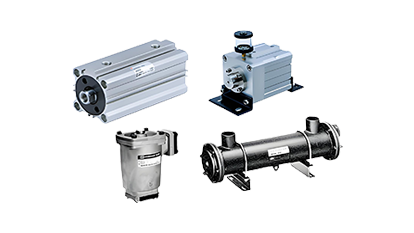Introduction to SMC Actuator Accessories BMA3-020:
BMA3-020 is one of the actuator accessories in the SMC product line, featuring compact size design; high precision and reliability; and can provide a clean analysis version. SMC Actuator Accessories BMA3-020 are widely used in various basic industrial fields such as automobiles, semiconductors, electronics, machine tools, food, packaging, printing, medical, pharmaceutical, and textiles. Through the integration of pneumatic technology and cutting-edge technology, even in the most advanced industries such as new generation information technology, robotics, aerospace, new energy, and intelligent manufacturing, pneumatic technology has unlimited potential for development.
Introduction to SMC
SMC is a globally renowned comprehensive manufacturer of automatic control components, established in 1959 with its headquarters located in Tokyo, Japan.
After decades of relentless effort and innovation, SMC has gradually enriched its product range and, thanks to its superior quality, has gained the trust of countless users. Today, SMC has developed into a global leader in the pneumatic industry.
SMC's products now include 12,000 basic types and 700,000 specifications, widely applied in automated production across various fields.
Known for technological innovation and high quality, SMC focuses on energy efficiency and reliability in product design to meet the demands of harsh industrial environments. The company has a comprehensive global research and development, manufacturing, and service system to ensure rapid response to customer needs.
SMC's 'pneumatic control technology' is widely applied in basic industrial fields such as automobiles, semiconductors, electronics, machine tools, food, packaging, printing, medical, pharmaceutical, and textiles. Through the integration of pneumatic technology and cutting-edge technology, even in the most advanced industries such as new generation information technology, robotics, aerospace, new energy, and intelligent manufacturing, pneumatic technology has unlimited potential for development. In high-tech fields such as semiconductor engineering, liquid crystal manufacturing, biomedicine, and medical devices, SMC's products excel, and pneumatic technology is continuously expanding into new application areas.
In the Chinese market, SMC provides customized solutions through its localization strategy to help upgrade the manufacturing industry. Its core products include cylinders, solenoid valves, pressure reducing valves, filters, etc. SMC continues to promote intelligence and sustainable development, enhancing product performance through digital technology, reducing energy consumption, and demonstrating a dual commitment to environmental protection and efficiency. With a century of technical accumulation, SMC has become a leading enterprise in the pneumatic industry.
SMC Actuator Accessories BMA3-020 Stock and Special Offers
SMC Actuator Accessories BMA3-020 may have different price discount strategies based on market conditions at various times. For real-time stock prices and special offers, please contact us for first-hand information. For form inquiries, please leave a message.
Actuator Accessory BMA3-020 belongs to the Hydraulic Components series under SMC company, model number BMA3-020. To purchase or inquire about Actuator Accessory BMA3-020, you can directly contact 158 0047 0089 (Mr. He).




